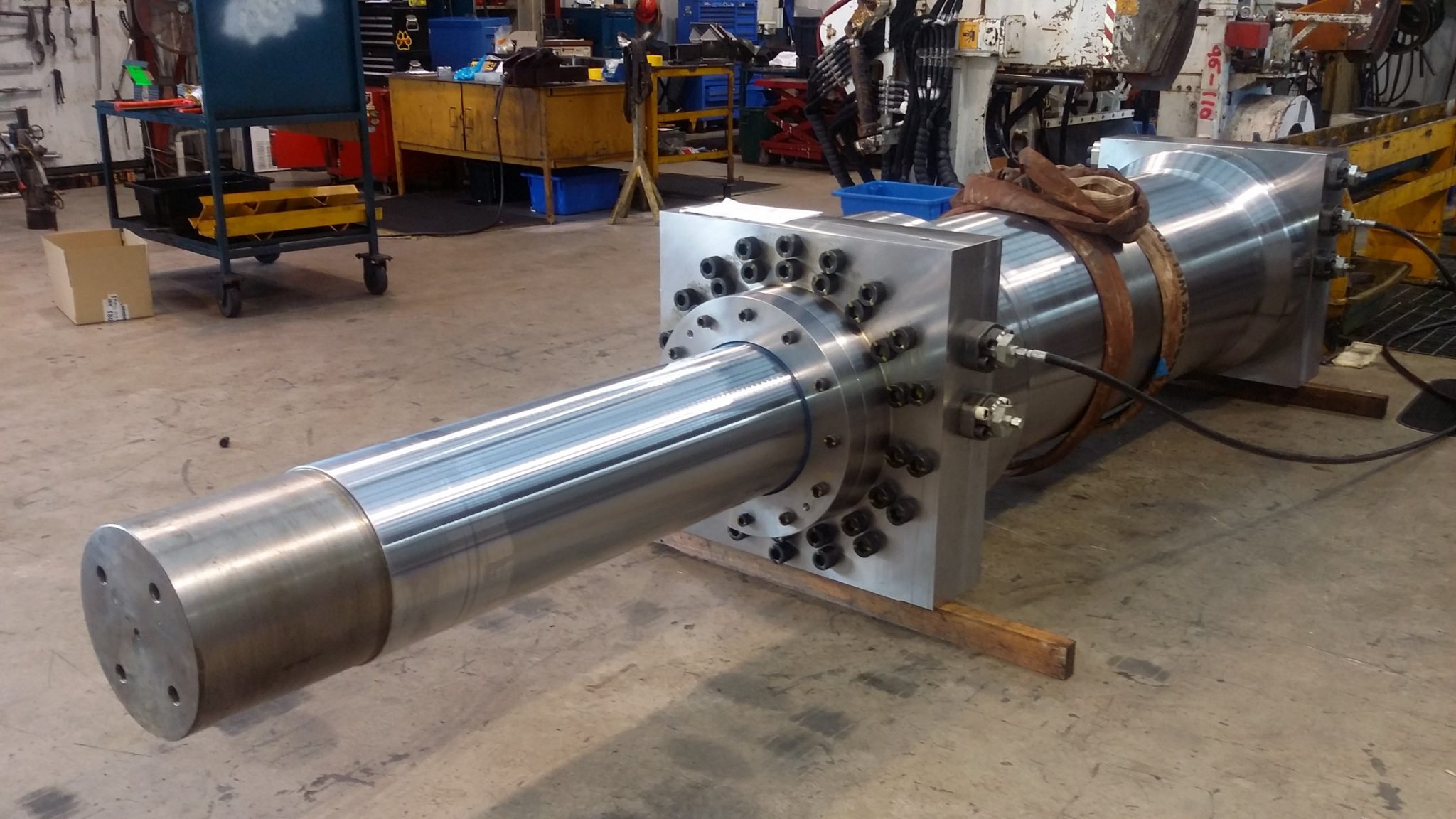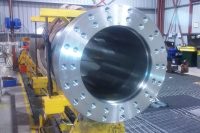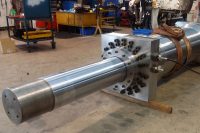Manufacturing a nine-tonne hydraulic cylinder and supply line would be a challenge for most hydraulic cylinder manufacturers. However, armed with the right mix of skills and experience in various industrial hydraulic services, the Berendsen team was able to achieve a successful solution. Over 400 man hours culminated in a great result, and most importantly, a happy client.
The Project
A long-term client of Berendsen contacted the company for help at the beginning of 2014. This particular client, located in Western Australia, has been in operation since 2003, and is part of a long-established fodder exporter. The client, a leader in hay pressing technology, required a spare hydraulic cylinder for their primary hay press, and engaged Berendsen to provide a solution.
The cylinder was far larger than would typically be encountered in hay pressing applications, weighing in at nine tonnes. In addition, the cylinder needed to be designed to withstand the 800 tonne pressing force and demanding cycle times required by the process.
The client needed a spare cylinder handy in case something went wrong with the primary one. The cylinder currently in use produces 100kg hay bales, which are then split into two and shipped to Asia for consumption as stock feed.
According to Berendsen’s WA State Manager Rick Beeken, the client’s choice to use Berendsen was an obvious one, for a number of reasons.
“They are a long term client of Berendsen and have been working with us for 11 years.”
“Currently we look after all their plant needs, so we were the obvious choice for them,” he said.
Given the size of the press and the client’s reliance on it for their business operations, it was imperative that they had a replacement ready if their main cylinder malfunctioned. As it takes a day to remove the cylinder, they also wanted to ensure they could easily swap it with an appropriate replacement and avoid any delays having an adverse impact on their business.
The Challenges Presented, and Our Hydraulic Solutions
The size of the cylinder was extremely large, nine tonnes in weight and able to exert 800 tonnes of force. Manufacturing and assembling a cylinder of this size would be at the upper end of any manufacturer’s capabilities, but fortunately Berendsen has the equipment and capacity to produce a cylinder to these specifications.
The size still presented a number of different challenges throughout the process, which required some creative thinking and innovation to overcome.
1. Suppliers. The client was concerned that due to the sheer size of the cylinder, there are a very limited number of manufacturers who would be capable of undertaking the task of forging a cylinder of this size from the material required (4140 steel). The type of steel required was not readily available in Australia, so sourcing it required looking overseas.
Solution: It was an obvious choice for Berendsen to manufacture the cylinder in-house. Berendsen is one of the few companies in Australia that has both the hydraulic engineering expertise and the workshop capability to design and manufacture a cylinder with a 553 mm barrel bore. With no standard hollow bar options available to use for the barrel, Berendsen’s only option was to look at a forging. An overseas supplier was located and the barrel material was forged at the supplier’s location. This required careful attention to detail by the Berendsen team in supplying information and in communication, to ensure the specifications were exactly right.
2. Design. Despite the number of design challenges ahead, the experienced team was confident throughout the design process. To provide a successful design outcome, the following areas required specific consideration:
- The sheer size of the cylinder
- The cyclic operation of the cylinder for an industrial installation operating on the basis of a 24 hour/day continuous operation
- The speed of the cylinder operation
- The operating pressure of the cylinder
- The manufacturing difficulties associated with handling and machining the physical size of the individual components
Solution: The team incorporated the following considerations into the design:
- A custom cylinder design was applied to take into consideration such areas as operating cylinder speed and pressure as well as appropriate Design Safety Factors for the materials applied
- Provision for additional lifting points in individual components to necessitate ease of handling during the process of manufacturing and cylinder replacement
- Incorporation of correct clearance tolerancing between moving components. This was to reduce, if not eliminate, the possibility of cylinder seizure as a result of diminished clearances caused by cylinder component expansion, which in turn is due to the ingress of heat induced by the operating system hydraulic fluid as well as the operational process of the cylinder
- Maximization of port sizing within the cylinder end caps to reduce pressure losses associated with high operating flows
3. Honing. The cylinder was difficult to hone within the tolerance required due to its size. Given the amount of heat that would be generated by a cylinder of this size, there was a danger of overheating if the clearances weren’t quite right.
Solution: Clearances were calculated to avoid overheating and to ensure the cylinder still met specifications.
4. Assembly & Testing.
Assembling the cylinder presented a number of challenges. The first challenge was the torque setting required on the fit between the piston and the rod. Assembling the rod in the barrel presented a challenge in that any misalignment could result in damage to the seals, which would likely not be discovered until the testing phase. Fitting the endcap, tensioning the head and endcap bolts, and the testing phase itself would also prove difficult tasks for a cylinder of this size.
Solution: Berendsen manufactured a special purpose tool to ensure the correct torque could be applied, so the piston or chromed rod would remain undamaged. Special lifting jigs were manufactured to ensure no damage was caused during assembly. A torque multiplier was used to successfully torque the bolts to 560Nm. The Berendsen team set up the test rig to ensure the required flow and pressures were achievable. With a working pressure of 350 bar, and an operating speed of 200mm per second, the test rig operated at almost maximum capacity in order to provide the testing results required. All items in Berendsen’s Inspection and Test Procedure document were successfully completed after four hours of testing.
The Outcome: A Notable Accomplishment for Hydraulics in Australia
The manufacture of the cylinder took four months from the design and development phase, through to successful completion and delivery. The project was completed and delivered to the client on time, and within budget.
Berendsen supplied First Article Inspection (FAI) documentation to substantiate all of the specific requirements of the project. The FAI included information such as material specifications, certifications, surface finish details, and the tolerances required to be achieved between mating parts.
Early feedback from the client is that the cylinder has fitted into place correctly, and is performing within the hydraulic system as expected.
At the end of the project, Berendsen CEO James Leach commented,“Berendsen is one of a small number of Australian manufacturers who possess the capability and expertise required to produce a cylinder of this specification. Whilst the trend amongst Australian manufacturers is to curtail onshore investments, Berendsen sees significant opportunities to grow its manufacturing revenues and continues to invest in capability and capacity. It is our ability to innovate that has enabled us to secure a number of important manufacturing contracts in the mining and defence sectors.”




